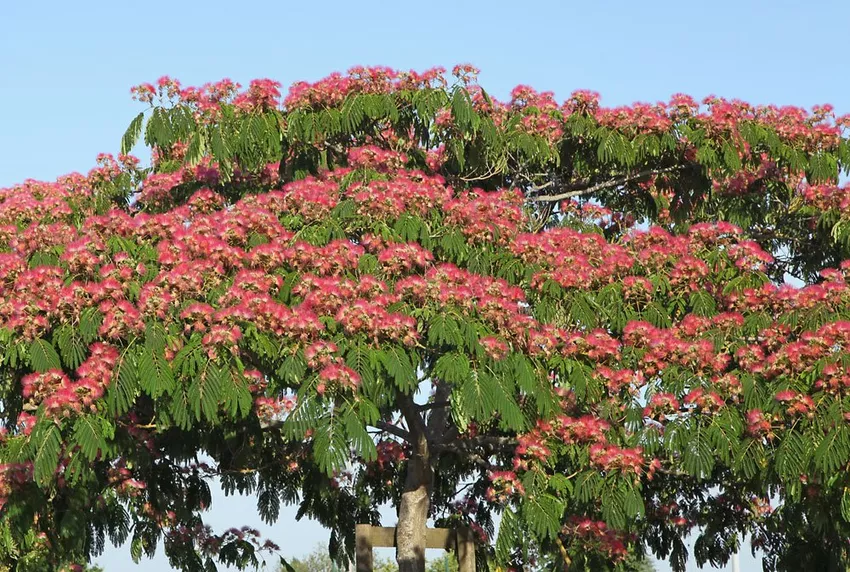The silk tree is not only easy to grow, it also requires very little maintenance. However, you should note a few important notes.

The silk tree (Albizia julibrissin) is also known under the names silk acacia or sleeping tree. The characteristic responsible for the latter designation is that the tree folds its leaves together at night, i.e. it “sleeps”, so to speak. During the day it impresses with filigree, pinnate leaves, a lush, umbrella-shaped crown and pink, fluffy flowers. The young tree or shrub is sensitive to cold, but otherwise very easy to care for. Under optimal conditions and with the right care, it can grow to between three and six meters in height, and some specimens even reach a height of up to ten metres.
But there is nothing wrong with keeping the silk tree in a bucket. The only important thing is that you create the optimal conditions and care for it properly.
Care for the silk tree - That's what matters
» Find location and soil for the silk tree
The silk tree needs a place in the sun or semi-shade. Young trees should be sheltered from the wind. A spot close to the wall of the house is ideal, but remember that the tree can grow quite tall and wide. The silk tree grows quickly, ensure young trees grow straight with supports. Young plants should only be planted in the garden towards the end of May, when there is no longer any threat of frost.
The soil must be loose, permeable and humic. A high proportion of sand in the substrate is very beneficial. This allows rain or irrigation water to drain away quickly, and sandy soil is good for the robustness of the trees and positive for the winter phase. Heavy, loamy soil is not at all suitable for the silk acacia, it encourages waterlogging and can lead to root rot.
The young silk tree can easily be planted in a bucket. The same conditions apply to the substrate as outdoors. The plant is sensitive to frost. Place the silk tree in a bright, cool place in winter. If this possibility does not exist, then protect the silk treefleece or a coconut mat.
» Water Supply and Fertilizer
Silk trees need balanced irrigation. In the summer, water plentifully and regularly, in the cold season significantly limit the water supply. The root ball should never dry out. You can tell from the leaves whether the tree is getting enough moisture. If the leaves curl up and feel dry, you need to water more. If the soil is permeable enough, there will be no waterlogging.
Fertilizer makes sense during the growth phase: From March to the end of July, it is best to use an organic complete fertilizer (such as Cuxin Volldünger Orgasan) every two weeks, compost is also well suited.
» The cut: important for growth and shape
Young silk trees need to be cut back more often to stimulate growth. New shoots appear on the shortened shoot tips, so that you can use them to specifically influence the shape. The silk tree in the tub should not grow so much taller than a bushy shrub. The pruning is ideal for this. With the silk tree in the field, shorten the lower branches and the umbrella-like crown will develop perfectly. The deciduous tree is insensitive to cuts and does not mind cuts that are too deep. Spring is ideal for topiary.